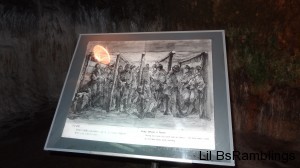Okinawan Naval Underground
I’m no history buff when it comes to World War 2 so I was relatively surprised to learn that Okinawa was the site of a huge battle, the Battle of Okinawa. When my sister suggested that we visit the tunnels of the former Japanese Navy Underground Headquarters, I jumped at the chance. To show you where we are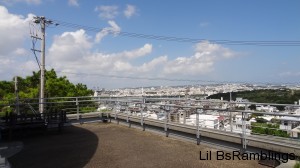 this is the view from the visitor’s entrance on top of the tunnels
this is the view from the visitor’s entrance on top of the tunnels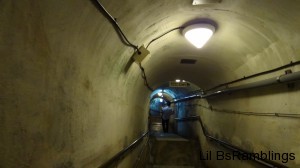 and this is the stairs we went down to get to the headquarters.
and this is the stairs we went down to get to the headquarters.
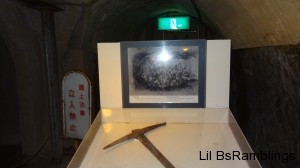 The 450 meter tunnels were cut by hand with pickaxes by hand to hold the 4000 men they would hide. Earlier in the battle the sailors had built and fortified these tunnels as the headquarters of their navy.
The 450 meter tunnels were cut by hand with pickaxes by hand to hold the 4000 men they would hide. Earlier in the battle the sailors had built and fortified these tunnels as the headquarters of their navy.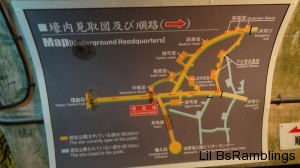 When they were ordered north to another position, they had destroyed the weapons that were hard to carry, like cannons and other big guns. When they arrived to their new headquarters, they found barely any protection and begged their leader
When they were ordered north to another position, they had destroyed the weapons that were hard to carry, like cannons and other big guns. When they arrived to their new headquarters, they found barely any protection and begged their leader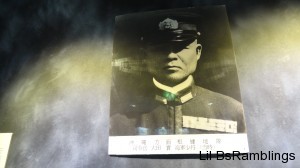 Rear Admiral Minoru Ota to return to the tunnels for a final stand against the Americans. Finally he agreed and the Navy sailors that could still move went back to the underground headquarters.
Rear Admiral Minoru Ota to return to the tunnels for a final stand against the Americans. Finally he agreed and the Navy sailors that could still move went back to the underground headquarters.
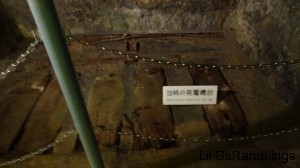 The tunnels were powered by 3 generators kept in spaces like this one.
The tunnels were powered by 3 generators kept in spaces like this one.
Space was so tight the petty officers, at least a few hundred men, had to sleep standing up, leaning against poles.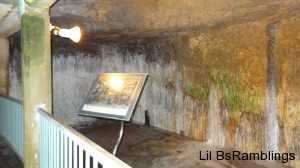 The petty officers had two rooms this size
The petty officers had two rooms this size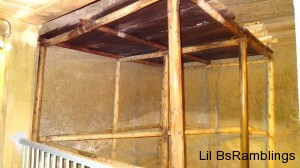 and this is a recreation of what they had to sleep on. Their motto by this time in the war was “Do Without Until We Win” and this headquarters is a good example of that ideal. Even the Rear Admiral went with that ideal.
and this is a recreation of what they had to sleep on. Their motto by this time in the war was “Do Without Until We Win” and this headquarters is a good example of that ideal. Even the Rear Admiral went with that ideal.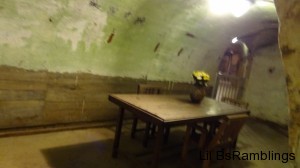 This is his office/dinningroom/sleeping quarters. Although he was the only person in the complex to have his own room, he got much less than most officers would demand now a days. There medical area was merely a cave in the wall where supplies were kept and there might be enough room for a new patient to be laid on the floor to be treated.
This is his office/dinningroom/sleeping quarters. Although he was the only person in the complex to have his own room, he got much less than most officers would demand now a days. There medical area was merely a cave in the wall where supplies were kept and there might be enough room for a new patient to be laid on the floor to be treated.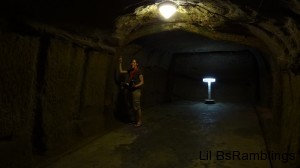 The code room was the biggest room in the complex and where the Japanese codebreakers would work for hours trying to break the American code or communicating with their own forces.
The code room was the biggest room in the complex and where the Japanese codebreakers would work for hours trying to break the American code or communicating with their own forces.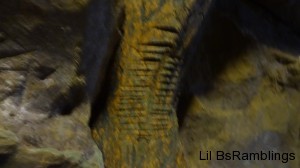 My sister is pointing at these in the ceiling beam. She thought they might be some sort of code, I thought they may have been counting the days they were in the tunnels, similar to a calender. Then we realized that the room had been redone and the supports were merely a form of plastic made to look like wood. The marks are probably a recreation of how they bent the wood or something to do with building.
My sister is pointing at these in the ceiling beam. She thought they might be some sort of code, I thought they may have been counting the days they were in the tunnels, similar to a calender. Then we realized that the room had been redone and the supports were merely a form of plastic made to look like wood. The marks are probably a recreation of how they bent the wood or something to do with building.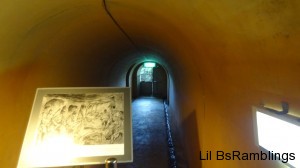 This is one of the main exits where the sailors ran out poorly armed to fight the incoming Americans. The Battle of Okinawa is known for its kamikaze attacks. Although used throughout the Pacific war, kamikaze attacks were a huge part of the Japanese defense strategy. With few planes and barely any weapons remaining, kamikazes,both on plane, on land and when possible by water on small speed boats were used. It was common for sailors to be sent from the tunnels with a few grenades, a sword attached to a stick as muskets were scarce, and orders of where to attack. A lot of Americans died due to these attacks but so did a lot of Japanese. They also used the local populations who mostly willingly fought for the Japanese. (The Wikipedia article says they were sent out at gunpoint to attack the Americans but the Rear Admiral sent a message back to Tokyo saying how willingly the civilians helped the war effort, even as they lost their homes and lives. He was requesting that the government look kindly on the Okinawans in the future.)
This is one of the main exits where the sailors ran out poorly armed to fight the incoming Americans. The Battle of Okinawa is known for its kamikaze attacks. Although used throughout the Pacific war, kamikaze attacks were a huge part of the Japanese defense strategy. With few planes and barely any weapons remaining, kamikazes,both on plane, on land and when possible by water on small speed boats were used. It was common for sailors to be sent from the tunnels with a few grenades, a sword attached to a stick as muskets were scarce, and orders of where to attack. A lot of Americans died due to these attacks but so did a lot of Japanese. They also used the local populations who mostly willingly fought for the Japanese. (The Wikipedia article says they were sent out at gunpoint to attack the Americans but the Rear Admiral sent a message back to Tokyo saying how willingly the civilians helped the war effort, even as they lost their homes and lives. He was requesting that the government look kindly on the Okinawans in the future.)
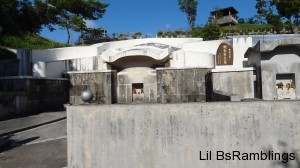 This s one of the few tombs on the site for all those who died in the tunnels. In the middle of June the highest ranking Japanese sailors, including Rear Admiral Ota, shot themselves in an honorable suicide inside the tunnels. When the tunnel was finally excavated years after the war, they found 2,400 people dead inside of the 5,000 men the rear admiral had brought back from the other position.
This s one of the few tombs on the site for all those who died in the tunnels. In the middle of June the highest ranking Japanese sailors, including Rear Admiral Ota, shot themselves in an honorable suicide inside the tunnels. When the tunnel was finally excavated years after the war, they found 2,400 people dead inside of the 5,000 men the rear admiral had brought back from the other position.
Tagged with: japan • okinawa • travel • traveling japan
Like this post? Subscribe to my RSS feed and get loads more!
